Meade 70mm Quadruplet APO Review
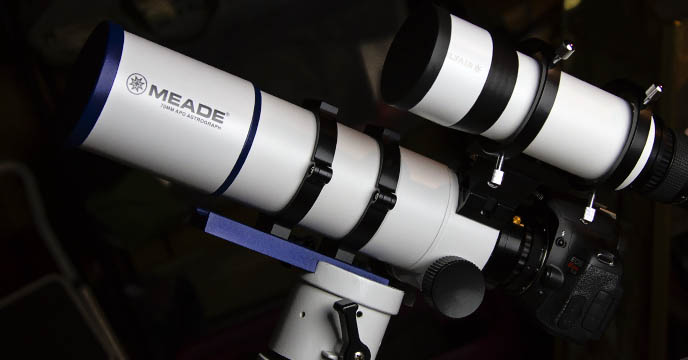
The Meade 70mm Quadruplet APO is a high-quality imaging refractor for wide-field astrophotography. This compact telescope utilizes FPL-53 ED glass to produce images with impressive color correction.
The quadruplet lens system design results in an ultra flat-field, without the need for an additional field flattener.
In November, I was given a chance to test the Meade 70mm Astrograph in my backyard. My excitement for this telescope should come as no surprise, considering my love for apochromatic refractors.
The biggest question on my mind was just how flat the field be when using my DSLR camera. In this review, I’ll share everything I know about this stocky white refractor.
Related Post: Why You Should Start Astrophotography with a Refractor
Key benefits of the Meade 70mm astrograph are extreme portability and lack of field flattener needed for astrophotography
You may remember seeing some images shared on social media using the hashtag #astrobackyardchallenge. These photos of the Soul Nebula were captured using a Canon EOS Rebel T3i DSLR through the Meade 70mm Quadruplet telescope.
The RAW image data was processed by several talented amateur astrophotographers from around the world.
For a hands-on astrophotography image processing tutorial, be sure to check out my YouTube video using Photoshop to produce the image below.
This image was captured from a red-zone using 5 hours of total integrated exposure time.
Astrophotography Image Processing in Photoshop (Video)
The Soul Nebula | Canon 600D DSLR through the Meade 70mm Quadruplet Apo
Meade 70mm Quadruplet APO Review
The Meade 70mm Quad is heavier than you might think. It outweighs the William Optics Z61 by a more than a pound, which is substantial considering it is only 10mm wider in aperture.
The extra weight is, of course, due to the quadruplet-element design (more glass!). I’ll take a little extra weight if it means near-zero detectable color fringing every time.
At first glance, the price tag may have you wondering whether the Meade 70mm Quadruplet APO is worth the extra cost.
For a true comparison of price against the competitors, be sure to factor in the accessories included with the Meade including an aluminum carry case and DSLR camera adapter.
Factor in the price of a dedicated field-flattener/reducer when comparing the prices of competing telescopes in this range.
A clear competitor in this realm of imaging refractors is the William Optics Zenithstar 73 (Z73). If you haven’t read my review of this capable little doublet, feel free to hop over to that post now.
The main differences between the Z73 and Meade 70mm APO are the optics (Quad vs. Doublet), aperture (70mm vs. 73mm), and of course, price.
Competitor: The William Optics Zenithstar 73 Doublet APO
I won’t tell you that one is better than the other because they both offer exceptional value for the money and have the key ingredients of a practical imaging refractor such as a robust focuser.
The need for a field flattener for the Z73 (Flat73) for a flat field image may be the deciding factor for you when making your final decision.
Both telescopes proved to be exquisite imaging telescopes with excellent contrast, color correction, sharpness, and flat field qualities.
Video Review
I have filmed a video review of this telescope on my YouTube channel. This may provide a better look at the features of this refractor hands-on. Please be sure to subscribe to my channel for more astrophotography telescope reviews, tips, and advice.
Adding a Guide Scope for Astrophotography
The built-in finder scope bracket offers a convenient solution for mounting a small guide scope right away. When setting up, I use a small finderscope to star-align my mount. I then swap the finder scope out for a guide scope using the same universal bracket.
I have mounted an Altair 60mm Starwave Guide scope, with an Altair GPCAM2 AR0130 Mono Guide Camera. For me, the balance of this configuration was a bit off, with the back end being a little heavy.
This issue could be rectified by mounting the Meade to a longer dovetail plate to properly balance the declination axis of the load.
Even with the slightly unbalanced load, the Meade was not an issue for my Sky-Watcher HEQ5 mount during the imaging session.
The telescope is so small and compact, that the counterweight sits right at the top of the counterweight shaft. The Meade 70mm Quadruplet Apo is likely within the limits of a star tracker mount such as the iOptron SkyGuider Pro or Sky-Watcher Star Adventurer but I have not tested this.
Connecting a DSLR camera for astrophotography
I must say, attaching a camera to this telescope was a straight-forward process. The camera threads directly into the focus tube. The connection between the optical tube and the included 48mm-42mm camera adapter is locked-in for the long haul. Simply unscrew the color-matched blue cap at the end of the focuser, and screw the DSLR with the adapter into place.
Since I shoot with a crop-sensor DSLR, the 48mm-42mm adapter ring was needed to connect my camera to the scope. This adapter is included with the Meade Astrograph package and has its own spot in the padded carry case. The adapter fastens securely to my Canon EOS T-Ring. A full-frame camera would thread the 48mm t-ring directly into the telescope without an adapter.
The collar of the telescope is rotatable with a locking screw, so you can easily adjust the framing of your target from portrait to landscape. The collar is rock solid, even after changing the orientation of my target in the image frame, I did not need to adjust focus whatsoever. Razor-sharp focus is one of the many benefits of an apochromatic refractor, especially at this focal length.
Connect a DSLR camera to the Meade 70mm Astrograph via the threaded focus tube and the Meade 48mm-42mm adapter for your t-ring.
Specifications:
- 70mm Aperture Astrograph OTA
- 350mm Focal Length, f/5 Focal Ratio
- Apochromatic Quadruplet Lens System
- FPL-53 Extremely Low Dispersion Glass
- Fully Multi-Coated Optics
- 10:1 Dual-Speed Crayford Focuser
- Vixen-Style Dovetail Plate
- Adjustable Cradle-Ring Assembly
- Hard Aluminum Foam-Lined Carry Case
Results and Impressions
At f/5, this refractor can collect a lot of light in a short period of time. This focal ratio is faster than all of my previous Apo’s including my beloved Explore Scientific ED80 (f/6). The added photon collecting power was felt when capturing images using short 2-minute exposures from the backyard. Even at ISO 800, I was quite pleased with the amount of nebulosity showing on the Soul Nebula project.
My individual light frames through the Meade Apo showed impressive contrast from the city. As expected, the field was completely flat to the edges of my APS-C sensor DSLR, and the stars were tiny and razor sharp. You wouldn’t know that we had wind gusts of up to 70kmh the night this single frame on the California Nebula was captured.
The image below was shot at ISO 800, with a SkyTech CLS-CDD light pollution filter in the camera body.
Single 2 Minute Exposure | Canon 600D DSLR through the Meade 70mm Quadruplet Apo
The stocky Meade 70mm Astrograph is solid and secure. With no field flattener to extend the imaging train and a modest overall tube length, the wind will likely never be an issue when shooting astrophotography with this scope.
The focal length of this telescope is 350mm. Not surprisingly, this telescope specializes in wide-field imaging of larger deep sky objects such as the North America Nebula, Andromeda Galaxy and the California Nebula as seen below. When you’re shooting this wide, guiding accuracy is much more forgiving. This is one of many reasons I recommend a small apo refractor to astrophotography beginners.
My final processed image of the California Nebula utilized 3 Hours and 14 Minutes worth of total exposure time. 97 individual light frames of 2 minutes each were stacked in DeepSkyStacker and processed in Adobe Photoshop. NGC 1499 is a large emission nebula and showcases the wide field of view produced by the Meade Apo.
The California Nebula using the Meade Quadruplet Astrograph with a Crop-Sensor DSLR
Limitations and Expectations
For astrophotography purposes, it’s hard to find negatives about the Meade 70mm Astrograph, other than price. At $1,199.00 USD MSRP, it certainly worth a conversation with your better half before making the plunge.
The drawbacks of this telescope are typical of all refractors of this size. The Meade 70mm Quadruplet will not excel at visual planetary observing, there is simply not enough aperture to pull in the fine details of the cloud bands in Jupiter, or spot the Encke gap in Saturn.
Also, If you are looking for deep, up-close views of smaller galaxies, you’ll want something with much more focal length. As I said, this telescope was built for wide-field imaging!
The Verdict
The Meade Series 6000 ED APO Refractors are well known in the astrophotography community as top contenders for deep sky imaging, and this quadruplet is no different. Take a look at the stars on the edges of my image frame when using a crop-sensor DSLR like the Canon T3i.
Full-frame camera owners will be happy to hear that the Meade 70mm quadruplet apo has a fully illuminated image circle (42mm) that will cover the entire camera sensor. The included adapter comes is a welcome addition to APS-C sized sensor DSLR astrophotographers like myself.
Features like a retractable dew shield and precision focuser are expected on a telescope in this price range, but also well appreciated. The padded aluminum carry case will get a lot of use thanks to the portability of this refractor, and the potential for serious deep-sky astrophotography while traveling.
I have enjoyed my time with the Meade Quadruplet over the past month. The telescope sets up quickly, and I was up and running on my target within 20 minutes of Polar Alignment. For anyone looking to capture exceptional wide field images using a DSLR, it’s hard to beat the convenience of a small refractor.
Smaller equatorial telescope mounts such as the Celestron Advanced VX or iOptron SmartEQ Pro will have no problem tracking the night sky with the Meade Quadruplet on top.
The Meade 70mm f/5 Quadruplet ED is proof that you do not need a large, heavy telescope to produce incredible astrophotos.
Astrophotography Results
If you would like to see an astrophotography image (Soul Nebula) captured using the Meade 70mm Astrograph, be sure to check out the hashtag #astrobackyardchallenge on Instagram.
At this time, there are over 15 different versions of the data captured in my backyard processed by amateur astrophotographers around the world.
They all took the time to edit the RAW image data to produce an extraordinary deep-sky portrait of the Soul Nebula. I would like to thank everyone that participated in the project, and tell you that I am absolutely amazed at the image processing talent currently on Instagram.
Left: The AstroBackyard Challenge on Instagram
Final Thoughts
I believe I made my thoughts on the Meade 70mm F/5 ED APO clear in the title of this post. I am a big fan! The images I have produced speak for themselves.
I hope that this review has given you a preview of what you can expect when using the Meade 70mm Quadruplet APO for astrophotography.
To keep up with my latest reviews, tutorials, and tips, please follow AstroBackyard on Facebook.
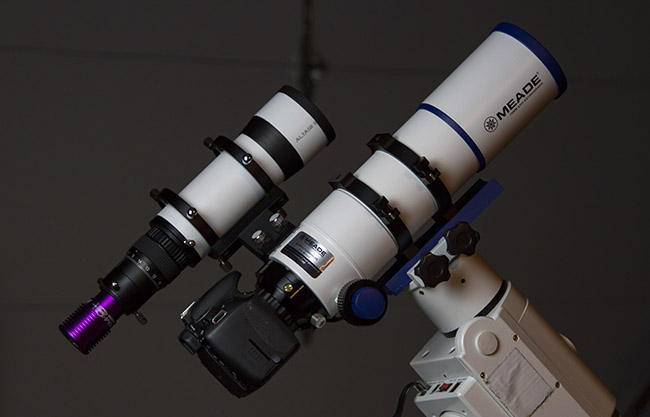
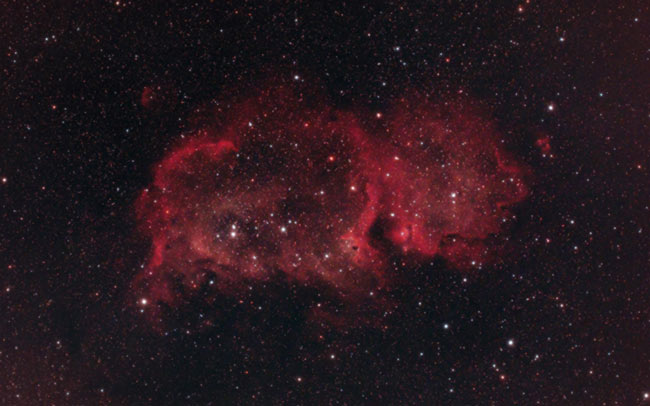
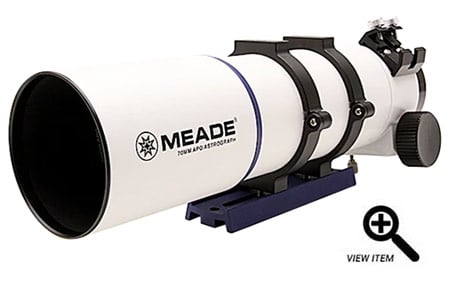
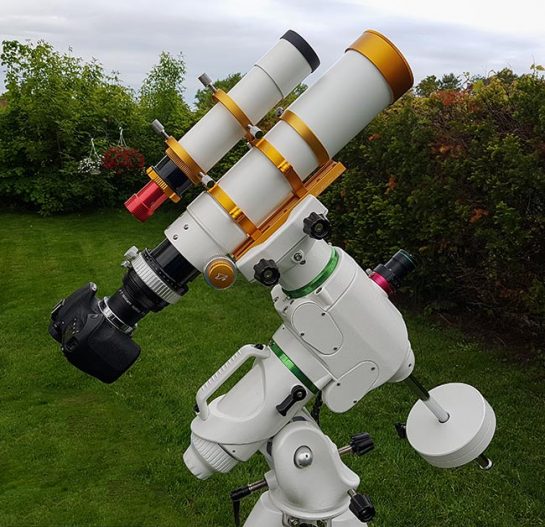
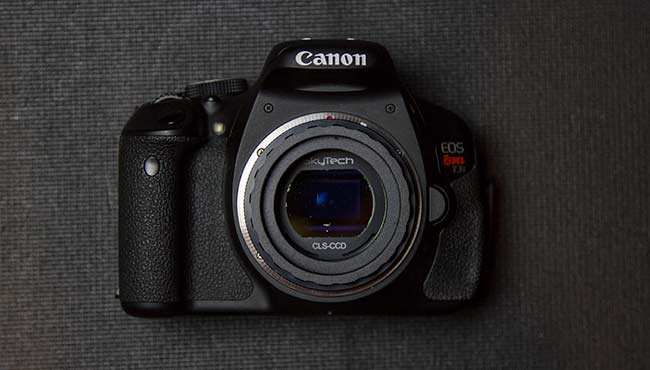
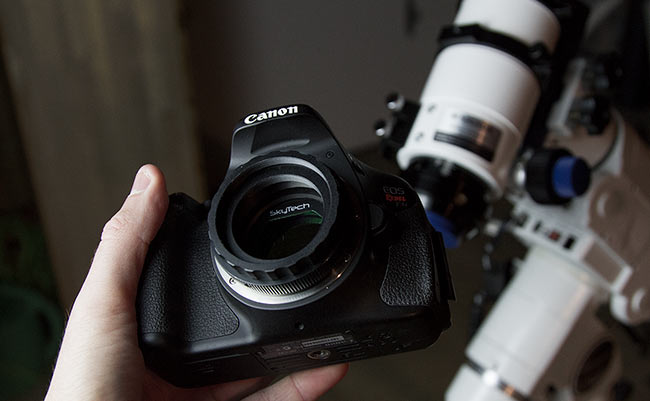

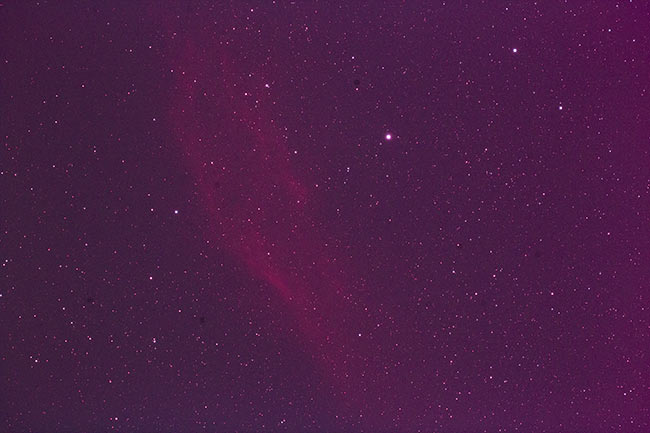


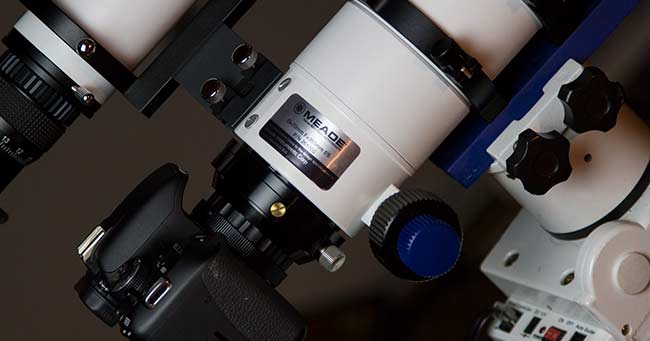


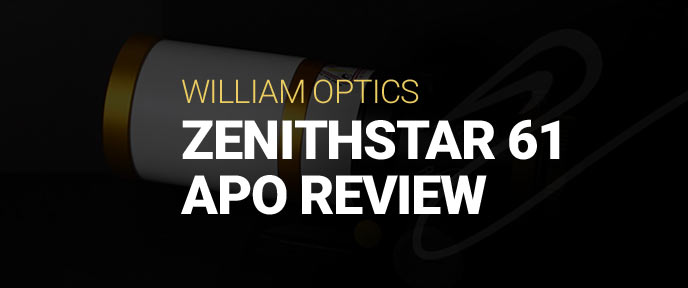


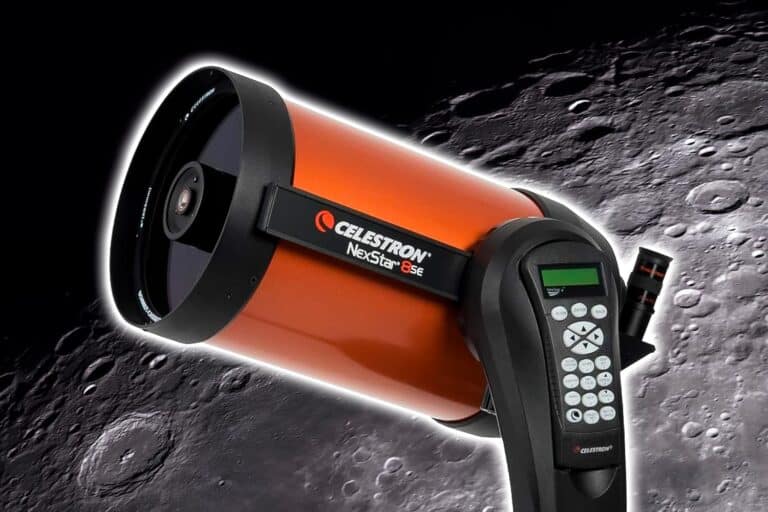
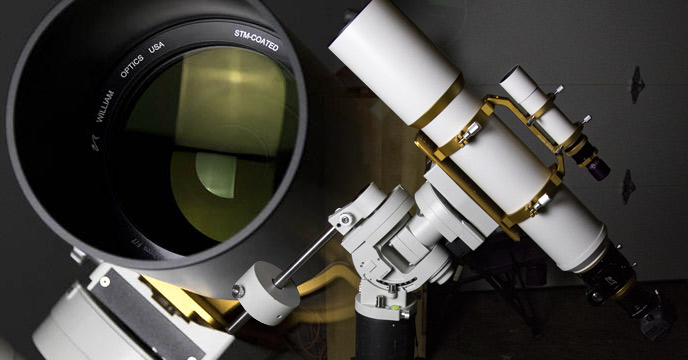
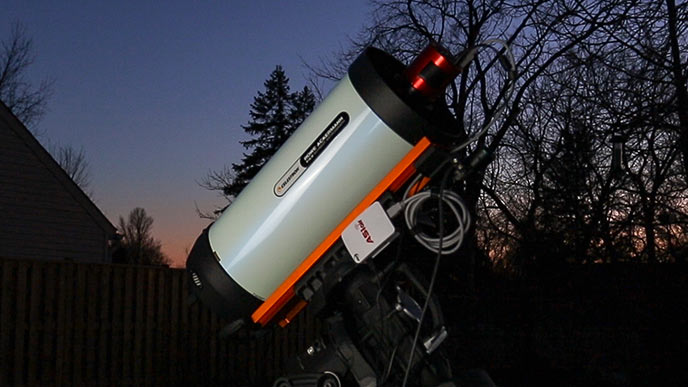
Hi Trevor!
I gotta say, your site and videos on YouTube have really increased my desire to do astrophotography. I’m currently only using a DSLR for long exposures, but I’m considering purchasing a telescope for deep sky photography. Can you please suggest a complete list of gear (telescope, mount etc.) a newbie like myself would need to get started with deep sky photography? The Meade 70mm Quadruplet APO sounds like a good intro to me, but would appreciate a complete list. My total budget would be approximately USD 2,500.
Thanks in advance, all the way from Norway!
PS. Keep up the good work!
Thanks, Sarmad! With your budget – you could do something like this: https://astrobackyard.com/portable-deep-sky-astrophotography-kit/ The SkyGuider Pro is an excellent introductory mount. You’ll be able to mount your DSLR, lens and small refractor like the WO Z61. That page breaks down each piece of gear. If you wanted to prepare for larger scopes down the road, I’d start with the mount first. The Orion Sirius is a solid choice: http://amzn.to/2zm2Ype Hope this helps. Thanks again!
Hi Trevor,
Nice review! Another scope to consider, currently on sale for $100 less, is the Stellarvue SV70T-IS with included field reducer/flattener. Since it is modular, it can run at f/6 native or f/4.8 with the reducer/flattener. I have been very happy with mine, and more experienced imagers seem to like it a lot too.
More info at http://www.stellarvue.com/stellarvue-sv70t-is-imaging-refractor-telescope-system/
Keep up the great work! Been enjoying your podcast too 🙂
Thanks,
Bill
Thanks, Bill! Stellarvue makes some really nice telescopes – and you’re right, the SV70T-IS is worth looking at in this range. There’s that FPL-53 glass again! With the included flattener/reducer, that’s a real value. Thanks for weighing in, and glad to hear you are listening to the podcasts too:) Clear skies
Hi Trevor
Congratulations as a newly wedded man 🙂
Would you buy the Mead 70mm over the SW Scientific ED 102? I’m looking to replace my way to large SW Explorer 200 PDS. My mount is the HEQ5 Pro.
Any suggestions?
That’s a tough call – I love the mid-range power of the ED102 – but I think the Meade 70mm might be a better choice for wide field imaging overall. For example – the Rosette doesn’t quite fit in the ED102’s FOV – same goes for the California Nebula, North America etc. And you can’t beat the portability of the little Meade Quad. If you are planning to shoot all of the really nig stuff – I’d say spring for the Meade. Cheers!
Hi Trevor, would skyguider pro able to handle this scope? I gotto say it is a tough choice between William Optics Zenith 61 APO and this scope! I really admire your M31 shot using Zenith 61 APO!
Hi Trevor!
This is really awesome post. I am so much impressed to see how to Connecting a DSLR camera for astrophotography”! This is really cool. Thanks for sharing 🙂
How good is the focuser? Do you think it will handle the weight of a full-frame CCD camera and filter wheel without excessive sagging?
I understand that a scope like this is for imaging and not viewing with an eyepiece. However I have been interested in terrestrial photography, birding, wildlife and landscape with a full frame camera. Do people have any idea what the close focus distance is on a scope like this? or do you have to use many extension tubes making it too long to comfortably use? I know a photographic lens would likely be a better choice.
Get a 150-600 from Sigma or Tamron. Similar ~$1K price, full frame, and is a much better fit for all those types of photography. I am a professional photographer and do some astrophotography for fun.
Hi Trevor
What’s the collimation like on this scope? Would it be hard with the amount of lenses and for a beginner? Thanks.
Hi Trevor thanks for the video, I’m in the process of setting up my astrophotography setup with my Meade 70mm quadruplet and a skywatcher EQ5/ALT/AZ EQ. Keep up the great videos they are very helpful and I appreciate the effort you put in to making them.
Thanks so much, Paul. I love that Meade 70mm Quad. It sounds like you’re primed for some incredible deep sky imaging on the SW EQ5:)
Hi Trevor,
Thanks for all the good stuff you’re cranking out – you got me hooked on this hobby!
I feel blessed every minute I spend under dark skies.
A quick question:
I use the Meade 70mm Quadruplet APO with my Canon 7D – I have to use the 48mm-42mm adapter ring and the Canon EOS T-Ring. When I focus the entire focuser has to get into the body of the telescope to get the image into focus; I was thinking to get a Baader IR-Cut (2”) – but, I suppose, the distance between the sensor and the focuser becomes too large. Does this mean that I can only use clip-in filters? Thanks, Trevor!
Hi Trevor, thanks for the review! I recently started with astrophotography having mainly been a visual guy for about 2-3 years… After doing much research and watching your video review I decided to get the Meade 70mm, and I must say it’s a great addition to my kit. I drive mine with the Sky-Watcher Star Adventurer and it works fine. The combination makes for a very compact setup. Took my first decent picture of Carinae this weekend and following your processing tutorial on PS it came out great (for a noob)… if you get a gap, check it out on astrobin
Thanks again for all the help you provide!
Best regards
Matt
Partly due to this great review article but also a combination of factors I purchased one of these, my first APO.
Main reasons:
– easy to get going with a DSLR T ring adapter
– quadruplet all-in-one no “hidden costs” of needing a flattener or other components
– weight supportable by iOptron SkyGuider Pro
– f/5 – great for imaging
– 350mm – great jump up from most DSLR lenses and good focal length for composition in APS-C or full frame cameras
Two things would like to share:
1. Yes, this scope is great on my SkyGuider Pro without any autoguiding as long as I have a good view of Polaris and align it according to the offset in the iPhone app per the time and location.
2. There’s a very pronounced mirror shadow in images when used with a Canon 6D full frame camera. It is so bad that I removed the mirror from my camera to get rid of it. Flats could not fix the shadow except to reveal the signal lost during imaging due to it.
Hey Trevor, great site! I purchased the 70 mm Astrograph and it is indeed a fantastic imager. I was wondering where you can get the guide-scope for it? And also, I have the Skywatcher eq6-R Pro and cant find any info online about the LUNAR mode not engaging – I seem to be unable to have it lock into LUNAR mode, it just goes back to SIDEREEL. Have you tried LUNAR mode with this mount yrt?
Hi trevor great review, one question do this scope contain the possibilty to put 2 inch filter like optolong l-pro to it when i use dslr camera, i dont find information anywhere about it appreciate for your help